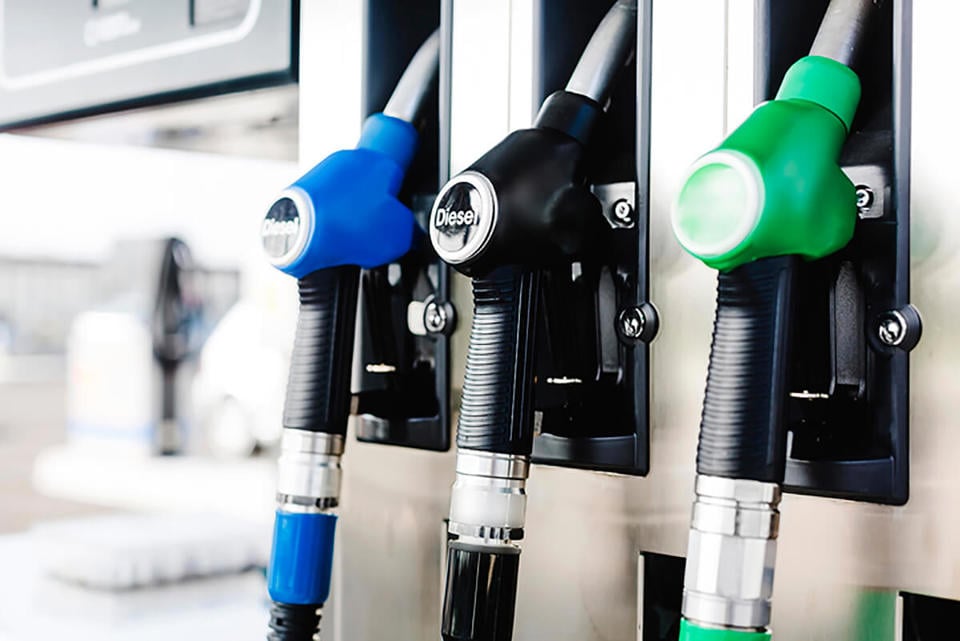After four consecutive months of pump price rises, the average cost of petrol on Britain’s forecourts has started to fall again, data from the RAC’s July Fuel Watch report shows.
While the reduction in the price of unleaded is only small – 0.41p from 112.20p to 111.79p – it reverses the rising price trend which began in March. The average price of diesel also fell, but even more slightly (0.06p) from 112.47p to 112.41p.
The fall in pump prices has been brought about by a reduction in the wholesale cost of both petrol and diesel. The price retailers pay for unleaded fell by 4.41p a litre and diesel by 4.67p in July, caused primarily by a $6.44 – or 11% – fall in the price of a physical barrel of oil, down from $48.07 on 1 July to $41.63 on 29 July.
What’s more, this reduction in the price of oil has meant the devaluation of sterling following the UK’s Brexit vote, which some had feared would lead to a price hike as fuel is traded in dollars, did not impact wholesale fuel costs negatively. Throughout July the value of the pound maintained an average of $1.31 against the dollar.
The dramatic drop in the cost of wholesale fuel led the RAC to make a public plea to retailers in July to cut their prices. On Monday (August 1) this was acted upon by the major supermarkets, which together are responsible for selling around 40% of the UK’s fuel, with many knocking 2p a litre off both petrol and diesel prices.
RAC fuel spokesman Simon Williams said: “July’s slight reduction in fuel prices is very welcome as it has ended four months of rising prices on the forecourt. We are hopeful that the early August supermarket cut will make a bigger difference to household budgets in the summer holiday period even though it came a more than a week later than it should have done.
“The falling price of fuel on the wholesale market is being driven by fears of slowing global economic growth adding to an existing oversupply of both crude oil and refined products such as petrol and diesel. Interestingly, this has happened at time when there are oil supply disruptions in Nigeria and Libya which had they not occurred would have meant there was even more oil on the world market.
“As it is motorists continue to benefit from the lower oil price which had led to petrol prices that are nearly 5p a litre cheaper than a year ago and diesel that’s more than 3p a litre less expensive.”
UK fuel price variation
Across the UK, the East Midlands saw the biggest drop in average prices of both petrol and diesel; unleaded came down 1.53p a litre and diesel 0.95p. Northern Ireland’s petrol prices reduced the least, but its unleaded is still some of the cheapest in the UK, only more expensive than Yorkshire and Humber (110.54p v 110.37p).
Both Scotland and Northern Ireland unfortunately suffered very slight rises in the price of diesel (0.13p and 016p). Despite this Northern Ireland’s diesel is still the cheapest in the UK; Scotland’s however is among the most expensive. The South East remains the dearest place to buy fuel with average petrol prices in the region at 111.70p and diesel at 112.49p.
|
Petrol - ppl |
03/07/2016 |
27/07/2016 |
Change |
|
UK average |
112.20 |
111.79 |
-0.41 |
|
East Midlands |
112.08 |
110.55 |
-1.53 |
|
West Midlands |
112.43 |
111.19 |
-1.24 |
|
South West |
112.50 |
111.36 |
-1.14 |
|
South East |
112.80 |
111.70 |
-1.10 |
|
Yorkshire And Humber |
111.45 |
110.37 |
-1.08 |
|
North |
112.10 |
111.09 |
-1.01 |
|
East Anglia |
112.11 |
111.12 |
-0.99 |
|
North West |
111.76 |
110.89 |
-0.87 |
|
Scotland |
111.39 |
110.75 |
-0.64 |
|
Wales |
111.58 |
111.01 |
-0.57 |
|
Northern Ireland |
110.87 |
110.54 |
-0.33 |
|
Diesel - ppl |
03/07/2016 |
27/07/2016 |
Change |
|
UK average |
112.47 |
112.41 |
-0.06 |
|
East Midlands |
112.41 |
111.46 |
-0.95 |
|
Yorkshire And Humber |
112.09 |
111.34 |
-0.75 |
|
South East |
113.17 |
112.49 |
-0.68 |
|
West Midlands |
112.51 |
111.85 |
-0.66 |
|
North West |
112.07 |
111.45 |
-0.62 |
|
East Anglia |
112.70 |
112.12 |
-0.58 |
|
South West |
112.70 |
112.29 |
-0.41 |
|
North |
112.04 |
111.69 |
-0.35 |
|
Wales |
111.90 |
111.77 |
-0.13 |
|
Northern Ireland |
110.82 |
110.95 |
0.13 |
|
Scotland |
111.96 |
112.12 |
0.16 |

















Derek webb - 04/08/2016 11:05
Last week I noticed the price of a litre of diesel at a M1 motorway fuel stop was an eye watering £129.9 - i wondered if any Company paying expenses etc would allow their drivers to fill up at these shocking places?